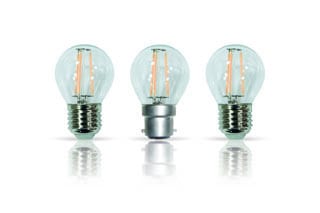Wattage vs Lumens – determining the efficiency and brightness of lights
 Often when choosing a suitable lamp, the choice can seem quite easy: one ‘simply’ has to select the most suitable power (Wattage) for the intended application.
Often when choosing a suitable lamp, the choice can seem quite easy: one ‘simply’ has to select the most suitable power (Wattage) for the intended application.
However the choice can in fact be more complicated: there are standard filament light bulbs, halogen light bulbs, compact fluorescent lamps, fluorescent tubes and LED lamps of various kinds. All of these lamps have different Wattages, efficiencies and illumination patterns making the choice much more difficult often resulting in individuals making misinformed decisions when choosing light bulbs.
ADVERTISEMENT
The power (Wattage) of a lamp does not correctly determine a lights output, hence this is an ineffective way of choosing suitable lighting. Wattages measure the amount of energy required to produce light, whereas Lumens measure the amount of light produced. To put it simply: The more Lumens in a light bulb, the brighter the light.
When shopping for new light bulbs, it is necessary to be aware of the Lumens rather than the Watts – especially for the energy conscious consumer. When looking at newer LED light bulbs, it takes far fewer Watts to create just as much light so Wattage ratings are no longer as useful. Before LED lamps, people cared more about Wattage than Lumens, although throughout the years, there have been major changes in technology within the lighting industry with a main objective being to develop bulbs that use fewer Watts to make more light.
It is a common misunderstanding that Lumens are the measurement of a lights ‘brightness’, Lumens are in fact a measurement of the total light ‘output’ of a lamp – Lumens can therefore be a more accurate source of measure because it educates us how the light actually performs regardless of the power source that produces it.
Luminous efficacy + life = Cost efficiency
LEDs use less Wattage than traditional light sources yet can produce an equally bright light. When evaluating LEDs, it is important to consider both Lumens and Wattage. Lumens per Watt is also known as luminous efficacy.
Efficacy allows us to objectively compare different lamps. The higher the Lumens per Watt, the better. This is because a lamp uses less energy to emit the same, or a greater amount of light. This in turn translates to less money spent on electricity costs for the same amount of light.
Most energy saving LED lamps have high luminous efficacy (more lumens per watt) and when taking into account the reduced power consumption alongside a high life expectancy (up to 50,000 hours) meaning decreased maintenance costs – it is easy to see why LED’s are considered a smart investment.
As an average comparison:
• Incandescent lamps produce a luminous efficacy of 15Lm/W (lumens per watt)
• Fluorescent lamps generally produce 70Lm/W but have the ability to get to 100Lm/W
• LED’s can range from 80Lm/W right up to cutting edge of 160Lm/W
Comparing lamps or light sources in general when complete technical data is not available can often be difficult, also many consumers will not look into the fine print. The goal is to look for the correct and necessary information when shopping to make informed decisions.
This article was written by Kaila Fulton from ANL Lighting
-
ADVERTISEMENT
-
ADVERTISEMENT

